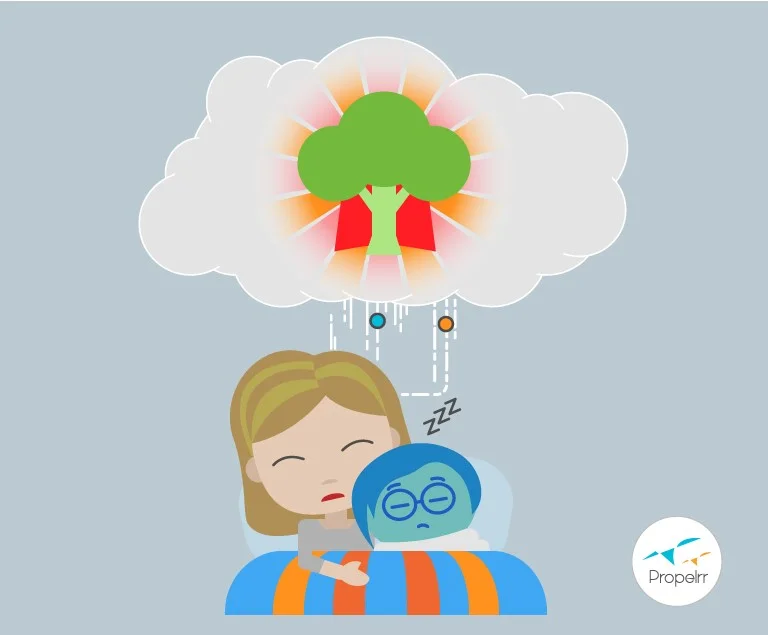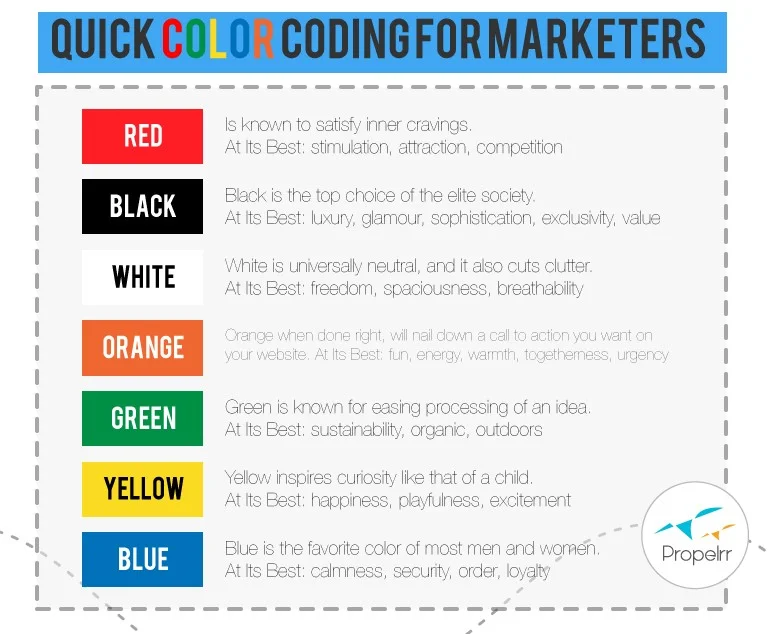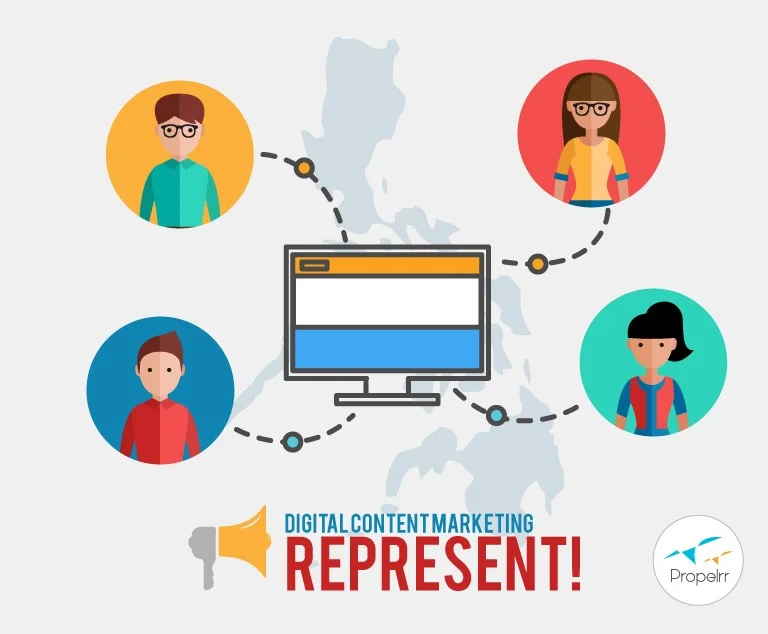8 On Point Content Marketing Lessons from Pixar’s Inside Out
Author & Editor
Content Team Lead
Published on: Sep 14, 2015 Updated on: Aug 20, 2024
Table of Contents
The movie Inside Out may now be under the radar, but it’s inarguably one of Pixar’s best movies to date. Forget the tickets sold and the profit earned. Forget the nostalgia with which everyone and anyone can relate to whether by will or by force. Forget the bazillion number of interactions across screens of all sizes. Throw rationality under a bus on EDSA sans the rush hour.

Inside Out is a soon-to-be classic example of clever, cutting and creative content marketing. The movie’s entirety is actually simple, and even forgettable. Truth be told, in the real world, emotions are taboo. However, in this same world, people universally aim for one thing — happiness. With this premise, Inside Out’s content marketing strategy was to juxtapose happiness with the a range of emotions that we usually try to suppress or even deny. This is another irrefutable insight that made the story develop effortlessly.
In between hearty laughs and almost-there-but-not-quite sobs, newbie and seasoned content marketers can learn lessons from the movie. As this era of consumer tend to veer away from content that does not spell contentment, we must continually fine-tune our strategies and tactics — in real-time, in full color. Ready for my version of these 8 lessons?
Content Meant Lesson 1:
The mightiest global brands are on their way to go down the long and winding local roads, finally! Thank you, mighty broccoli!

By now, the whole world knows that broccoli is a kid-friendly veggie in Japan, thanks to the brand’s unbelievable social listening prowess.
Pixar’s tiny yet mighty move shows us that even powerhouse brands in the world have to tailor-fit their content to win every market they target. Inside Out’s strategy is not solely built on ensuring brand leadership. To gain loyalty, brands must be relevant at all times, at all costs, and all in real-time. Inside Out went all out. Never mind that broccoli and bell peppers are both green. Never mind the very short scene that had to be edited just to please the Japanese moviegoers. Having to redo about 28 graphics in 45 locations worldwide has earned Pixar another badge of approval from a diverse audience. The result? A staggering blockbuster beater record, yet again.
With that said, marketers must make it a point to do thorough ideal audience research for content marketingand ensure that each detail of the campaigns they roll out will seamlessly connect to their local target market. This could even go hyperlocal for key cities or very specific locations. If you are still clueless, perhaps a quick X trending topics check might help you. Or head over to Instagram, check out the places where your target market is checking in, what hashtags they use, and what photos and posts appeal to them most. This can also be a jump-off point in figuring out who your top and upcoming influencers are.
Content Meant Lesson 2:
Color psychology is getting more and more powerful in this age where screens rule marketing.

Eighty-five percent of shoppers buy an item or an idea based solely on color. Inside Out literally and figuratively nailed down emotions that give audience content that reigns in the visual department with which they can easily identify themselves and others with. When you look at the whole film, all you can see is a burst of colors that are not too far away from the five characters.
But how did Pixar up the ante of the color game? Remember the scene when they almost vanished because they were trapped in the Abstract Thought room and had transformed into weird shapes? The power of basic colors on a white backdrop is always magnetic. At the same time, it is kinetic. No need to do all the fancy Pantone, really. (Though, I am a super fan of Pantone for more than six years!)
Consumers are drawn to colors that rouse a certain emotion, which in turn propels or repels an action. So whether you’re rebranding or launching a new brand, make sure that your colors represent what your core is. Is an angry red a good way to get moms to hit that buy button or will orange do the trick better? Will purple make your events management business stand out or will people feel unsure about it? Will green evoke an eco-friendly vibe for your organic food delivery business or will blue be a better choice in order to strike the sad notes over quick delivery websites?
Content Meant Lesson 3:
“He Said, She Said” marketing is okay, but going for gender neutrality is the new (sexy) key.
He Said, She Said works. But gender neutrality works better.
Inside Out is very big on debunking gender stereotypes that once ruled the world of marketing. For one, Riley is rather a gender neutral name. Even her aura and the manner by which her character unfolds did not talk much about her gender. Her favorite pastime is also a far cry from that of the usual female characters that the past generation has grown up with. No dolls, no pink room, no dainty details.
Secondly, and perhaps more interestingly, the mental battle between Riley’s parents while having dinner is another bull’s eye on gender neutral content marketing. While the movie stayed true to the difference between how a mom and a dad process parenting issues internally, Inside Out creators successfully communicated that at the end of the day, all parents have the same intention. No need to live up to a stringent rule about being the best mom and the most awesome dad. The movie veered away from having to rub in another episode featuring the battle of the sexes. This move might be Pixar’s answer to emerging parenting roles like same-sex marriages, single parents and couples in-the-middle-of-divorce.
Whenever you’re faced with one too many insights from the female and male segments, why not come up with a Venn diagram and see where the real insights that appeal to both sexes lie? Don’t stop there though. See what languages, tones and moods you can set for the campaigns you craft that will make them feel less about their gender and more about what they are really made of.
Content Meant Lesson 4:
The best analytics is always a work in progress.

Memories housed in spheres and a historical data that has proven how Riley can be happiest reminds us that we have the power to change the (marketing) world. At the same time, the sudden meltdown of the worlds governed by these analytics tell us that a tiny shift may mean damnation of the (marketing) world we are bound to dominate.
Analytics surely made marketing strategies smarter, thus building stronger, more agile brands. But remember, analytics must always be a work in progress. It must continually evolve alongside its consumer. At the heart of each marketing platform must lie the question: Given these data, these rich insights, these larger-than-life patterns, how will my campaigns fare should my data suddenly make a 180-degree turn?
Even feistier questions are: Should my data crash due to a worldwide blackout? Will my campaign live and breathe on its own? Will I be able to explain my data to each and every member of my team, my potential investors, and even to fifth-grade students? If the answer is yes, then you and your analytics is a match made in nirvana. Otherwise, get the right people to help you with intelligible, sensible data that can help you win the marketing game.
Content Meant Lesson 5:
The Era of Underdogs is here to stay for a loooong time.
Sadness is the underdog in Inside Out because, no one wants to be sad. No one wants to appear clumsy and tad too emotional. No one wants to be caught “blue-handed” because being tough is the basic drive of evolution. However, the best stories are those that celebrate the glitches, the messy, the failures, the wrong turns, and even the worst heartbreaks.
This is how Under Armour ambitiously went after Nike, and is now way past Adidas. America’s #2 keyplayer in the sportswear did not only use Gisele Bundchen as a stark contrast to Michael Jordan, Kevin Durant, Lebron James and Kobe Bryant. Under Armour disrupted the image often associated with supermodels and sport legends — a strong statement to build up the success story of an underdog. Steering clear from the superstar mentality, Gisele Bundchen knocked out Nike’s campaigns as she faced every ounce of sad thoughts thrown at her. These streams of sadness are then presented to an audience who instantly felt that connection with an otherwise almost-perfect supermodel.
They even put their name alongside Stephen Curry, a fresh face with a softer goodie two-shoes image — a far cry from the usual persona connected with basketball superstars. Of course, Curry is nowhere near being an underdog as he is definitely outlived the 15-minute fame challenge. Then again, his brand is one that speaks that success means being able to let your guards down for all the world to see. Being an underdog means being in touch with vulnerability — an inarguably human emotion that draws spectators to be “speak-tators” for your brand.
Content Meant Lesson 6:
Content marketers from the Philippines are highly skilled and are well aware of the power of emotional intelligence.

Ronnie Del Carmen, co-director of Inside Out, takes inspiration from his Filipino roots all the way back in Cavite when his daughter Elie had to go through a series of emotional turmoils after they moved to the US.
Another Filipino represent right there! Are we really a bunch of people who subscribe to the six degrees of separation theory just so we can link our lineage with the gems of the world? Not really. For one, Filipinos are too dispersed and we are known for delivering work that is both creative and bankable. Secondly, Filipinos almost always identify with their families in order to get things done, hence tapping emotions is our cup of tea.
It’s safe to assume that the Philippines is now on its way to make a mark in the digitally-driven world (finally!). With economic gurus saying that economy will be at its best come 2050, along with the promising 6% growth in the next years (no matter how the presidential election pans out), Philippines is the hub for digital marketers with world-class standards.
Content Meant Lesson 7:
The only way to get customers lead back to the road where the old, the plain, the painful, the almost forgettable rules but let these emotions guide your every campaign.

Pixar has always been retelling the tales that are within each of us. But they are better explorers of the stories that we have in us, but tend to forget for all sorts of reasons. They are not stopping at being better storytellers, though. They are the best storytellers when it comes to things we tend to label as the boring stuff.
How on earth will a simple fight over delayed packages lead to an avalanche of emotions in full color? How will a nanosecond look between couples lead to a heated debate about parenting that transcends in almost (if not all) cultures? And why do we always feel that change is bad, when in fact, it’s the only permanent thing that we can cling to?
The boring meets innovation in full color — that’s what Pixar’s not-so-secret recipe is all about. It’s about honest-to-goodness emotions that are married with out-of-this-world innovation. In the case of Inside Out, Riley’s boring days and nights have been sliced and diced and given a generous dose of stories that marry psychology, logic and even ethics. The result? A feel-good movie that wakes up our own sets of boring stories, only this time, we’re rethinking these stories.
In content marketing speak, the questions are: How is your brand story being perceived by your audience? Do they buy your product because of they need it? Or do they get your service because they feel that getting you is the best choice that they have?
Content Meant Lesson 8:
“Sleep Marketing” is an interesting venture that is coming soon.

In the movie, sleep is the chasm between the real (marketing-driven) and the unreal world. For majority of the population, sleeping time is something that we’d eternally be dealing with. It’s where the possibilities that marketers are yet to tap lie. It’s where the unconscious needs and wants come to life.
As of the moment, I don’t remember a single brand that I’ve literally dreamt of in my sleep. And I find this weird, thinking that I am immersed in the world where brands rule my every waking hour. Just imagine how powerful a brand is when it’s not only being aspired for by people. Just imagine the future where brands can go as big as being in the dreams of these people. Kinda quirky, but interesting, right? Will “sleep marketing” be the next holy grail of content marketing?
Believe it or not, “sleep” marketing is now being explored by researchers. In fact, studies show that by exposing people to a sound or a vibration while they are sleeping, there are signs of a better chance at reacting to a counter-stereotype. The study highlights the use of wearables backed up with haptics (communication through touching). Though the study is still in its infancy, the idea that content marketers now have a chance to take advantage of this uncharted territory in the near future is possible. Is this another derivative of subliminal marketing? Most likely.
With these eight content marketing lessons from Inside Out, marketers from all walks of the digital world are off to more ways to get to their audiences. What’s your version of Inside Out lesson? Share it with us.
